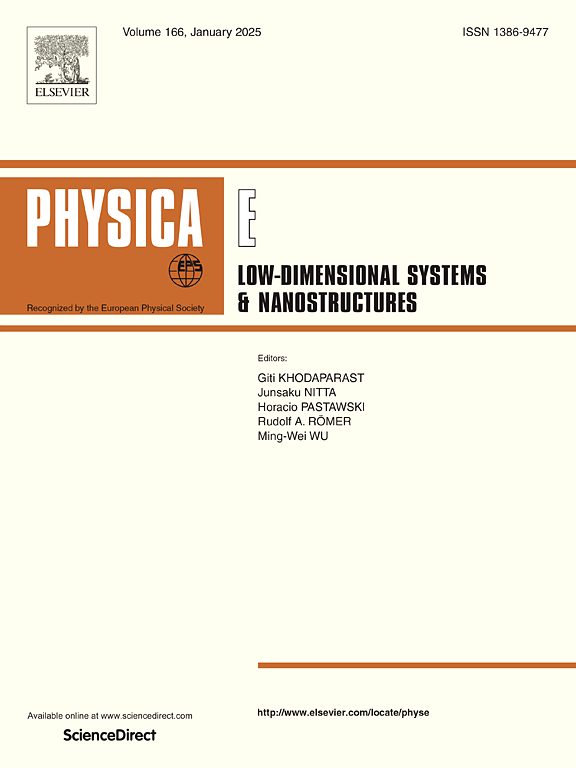Electrical contact between 2D material NbS2 and WSSe
IF 2.9
3区 物理与天体物理
Q3 NANOSCIENCE & NANOTECHNOLOGY
Physica E-low-dimensional Systems & Nanostructures
Pub Date : 2025-01-03
DOI:10.1016/j.physe.2025.116179
引用次数: 0
Abstract
Achieving Ohmic contact at the metal-semiconductor interface is a key technological issue for miniaturization and high performance of nanoelectronic devices. In this study, we design a metal-semiconductor heterostructure consisting of cold metal NbS2 and semiconductor WSSe, and study the properties of the electric contact by first-principles calculations. SWSe/NbS2 and SeWS/NbS2 both show p-type Schottky contact with different Schottky barrier heights and high charge injection efficiency. The heterojunctions can achieve the Ohmic contacts under the modulation of the interlayer distance, strain and electric field. In addition, the electric field causes changed contact type from p-type Schottky contact to n-type Schottky contact for both heterojunctions. Different interface contact for WSSe/NbS2 induces different electronic properties. The results provide the theoretical guidance for the application of WSSe/NbS2 heterojunction in the development of next-generation electronic and optoelectronic devices.
求助全文
约1分钟内获得全文
求助全文
来源期刊
CiteScore
7.30
自引率
6.10%
发文量
356
审稿时长
65 days
期刊介绍:
Physica E: Low-dimensional systems and nanostructures contains papers and invited review articles on the fundamental and applied aspects of physics in low-dimensional electron systems, in semiconductor heterostructures, oxide interfaces, quantum wells and superlattices, quantum wires and dots, novel quantum states of matter such as topological insulators, and Weyl semimetals.
Both theoretical and experimental contributions are invited. Topics suitable for publication in this journal include spin related phenomena, optical and transport properties, many-body effects, integer and fractional quantum Hall effects, quantum spin Hall effect, single electron effects and devices, Majorana fermions, and other novel phenomena.
Keywords:
• topological insulators/superconductors, majorana fermions, Wyel semimetals;
• quantum and neuromorphic computing/quantum information physics and devices based on low dimensional systems;
• layered superconductivity, low dimensional systems with superconducting proximity effect;
• 2D materials such as transition metal dichalcogenides;
• oxide heterostructures including ZnO, SrTiO3 etc;
• carbon nanostructures (graphene, carbon nanotubes, diamond NV center, etc.)
• quantum wells and superlattices;
• quantum Hall effect, quantum spin Hall effect, quantum anomalous Hall effect;
• optical- and phonons-related phenomena;
• magnetic-semiconductor structures;
• charge/spin-, magnon-, skyrmion-, Cooper pair- and majorana fermion- transport and tunneling;
• ultra-fast nonlinear optical phenomena;
• novel devices and applications (such as high performance sensor, solar cell, etc);
• novel growth and fabrication techniques for nanostructures

 求助内容:
求助内容: 应助结果提醒方式:
应助结果提醒方式:


